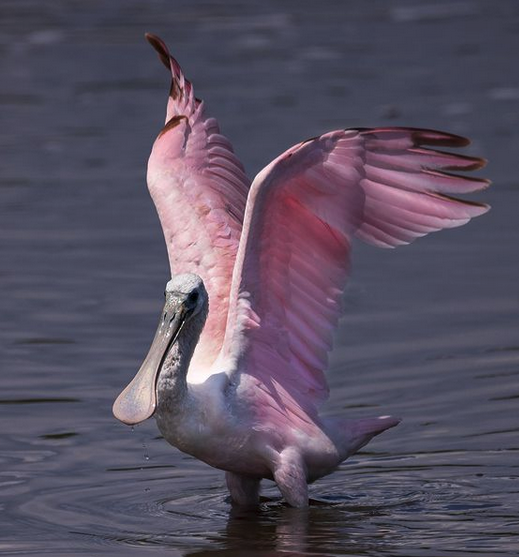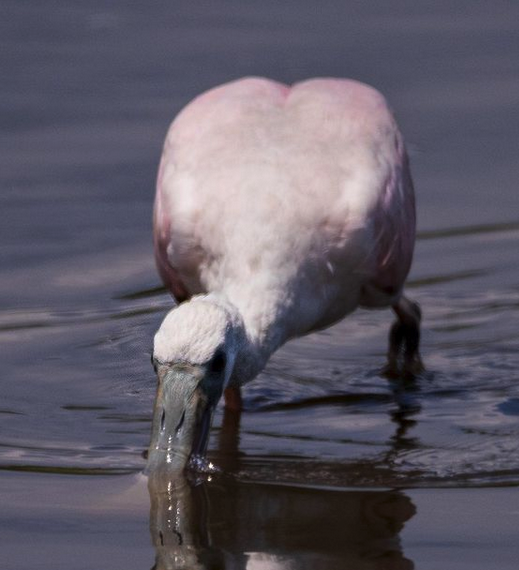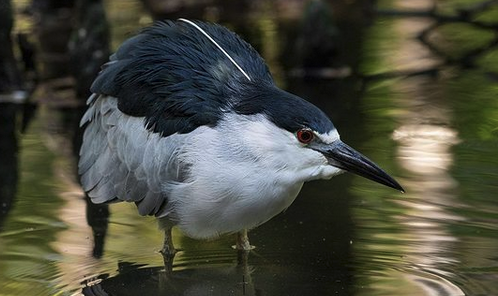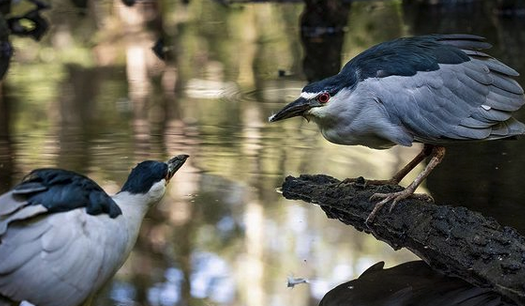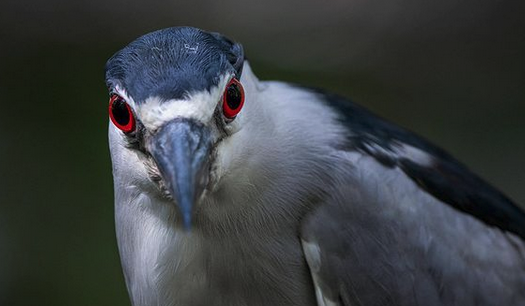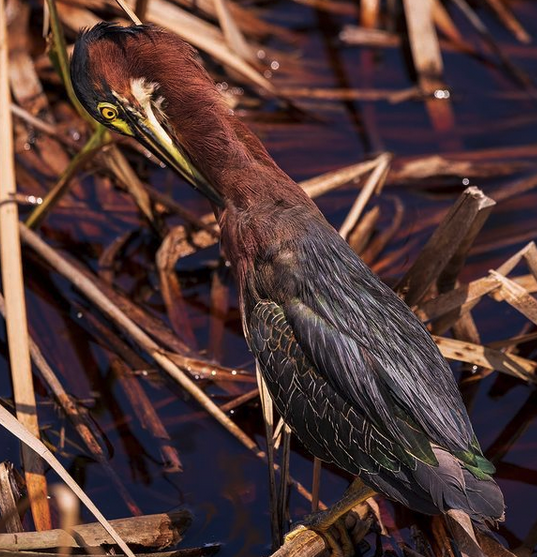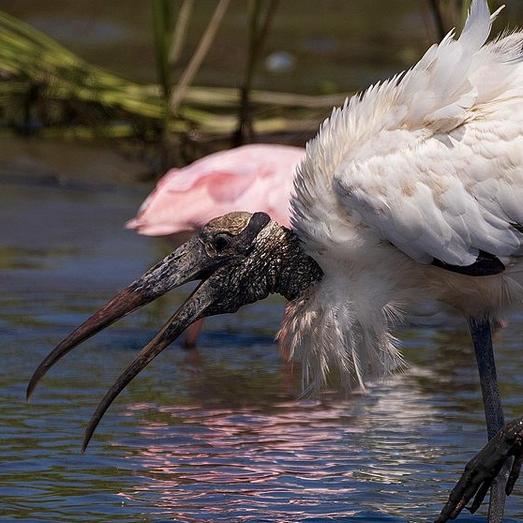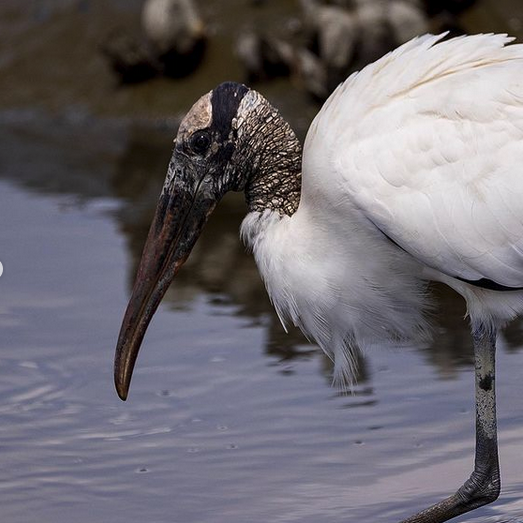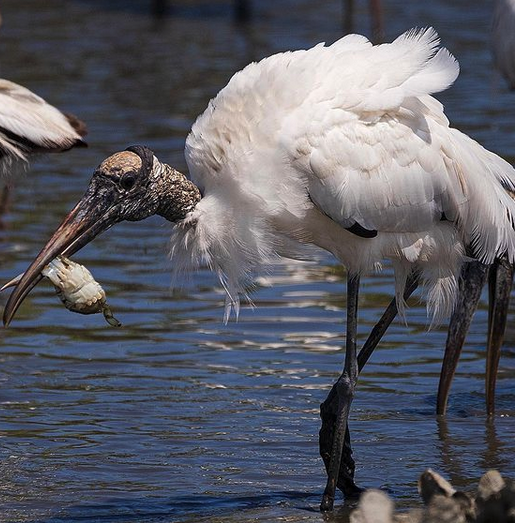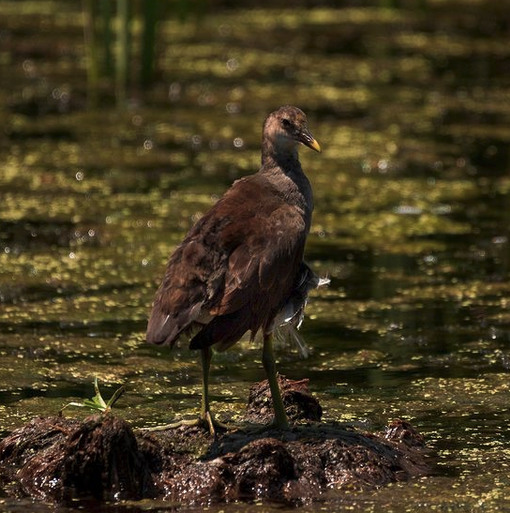One of the most unique looking birds we’ve got flying around the Carolinas is the Roseate Spoonbill.
With that long flat bill it’s easy to see how these beauties earned their name.
I spotted this one a few weeks ago while birding at the Huntington Beach State Park in Murrells Inlet, SC.
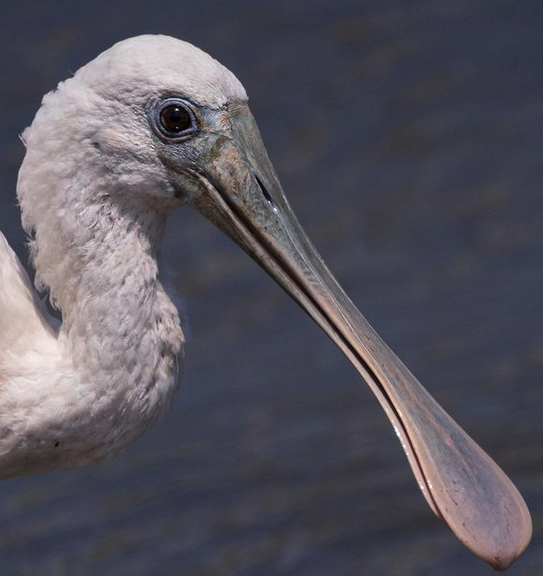
Having a “built-in” spoon on its beak can be a big help at mealtime. Spoonbills take advantage of this adaptation with a special feeding style known as “head-swinging.”
They’ll plunge their bill nearly vertically under water and swing it side to side in wide arcs. In this way, they snag a host of small animals from the lake bottom.
Their diet is made up of small fish, crustaceans (especially shrimp and crayfish), insects, molluscs (such as slugs and snails), and other small aquatic animals.
Roseate Spoonbills are an occasional, transient visitor to NC during the late summer along our southeastern coast. If you’d like to have a better opportunity to see them, your best bet is to take a short trip down to coastal South Carolina where they are found throughout summer and autumn. Some smaller flocks even spend the winter there so it might be worth looking for them in December too.
Photos by @sally_siko of @birdwatching_nc on the mighty @canonusa #R5

